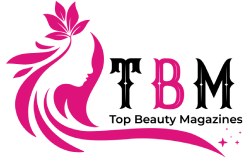Dreadlocks Hair Care is more important than you think. Dreadlocks, with their unique and stylish appearance, have been embraced by cultures around the world for centuries. Beyond being a fashion statement, they symbolize freedom, individuality, and cultural heritage for many. However, achieving and maintaining healthy, well-groomed dreadlocks requires more than just letting your hair mat and tangle. It’s a journey that demands dedication, proper care, and the right knowledge.
Table of Contents
What Are Dreadlocks
Dreadlocks, often referred to simply as “dreads,” are a hairstyle characterized by strands of hair that have been intentionally matted and knotted together to form rope-like structures. These strands of hair coil and interlock with each other over time, creating long, cylindrical sections of hair that hang freely or are styled in various ways.
Ways To Create Dreadlocks
Dreadlocks can be created using different methods, including:
- Natural Method: Also known as the neglect method, this involves allowing the hair to mat and form into dreadlocks naturally over time, without any deliberate manipulation or maintenance. This method typically results in a more organic and freeform appearance.
- Twist and Rip Method: This technique involves sectioning the hair and then twisting each section while pulling it apart to create knots and tangles. It’s a method commonly used for starting dreadlocks, especially for those with straight or wavy hair textures.

- Backcombing Method: In this method, the hair is sectioned and then backcombed or teased to create knots and tangles. The process is repeated until the desired thickness and texture are achieved, and then the knots are palm rolled to further compact them.
- Crochet Hook Method: A crochet hook is used to pull stray hairs into the core of the dreadlocks, tightening and smoothing the strands to create a more uniform appearance. This method is often used for maintenance to tidy up loose hairs and tighten the dreadlocks.
It’s important to note that dreadlocks require regular maintenance and care to keep them healthy, clean, and well-groomed. With proper care and attention, dreadlocks can be a versatile and striking hairstyle that reflects individuality and creativity.
Dreadlocks Hair Care
Regular Washing
Contrary to common misconceptions, dreadlocks need regular washing to keep them clean and prevent odor and buildup. Use a residue-free shampoo and focus on cleansing the scalp thoroughly. Rinse your hair thoroughly to ensure no shampoo residue is left behind.

Drying Properly
After washing your dreadlocks, ensure they are completely dry. Excess moisture can lead to mold and mildew growth within the dreadlocks. You can air dry them or use a blow dryer on a low heat setting. By taking the time to thoroughly dry your dreadlocks after washing, you can maintain their health and cleanliness, ensuring they remain fresh, odor-free, and free from issues like mold and mildew.
Maintenance Routine
Depending on your hair type and the method used to create your dreadlocks, establish a maintenance routine. This may involve palm rolling, twisting, or using a crochet hook to tighten loose hair and maintain the shape of your dreadlocks.
Choose Residue-Free Products
Opt for hair care products specifically designed for dreadlocks or those labeled as residue-free. Residue from regular hair products can accumulate in your dreadlocks, leading to buildup, unpleasant odors, and potential mold growth.
Protective Measures
Protect your dreadlocks while sleeping by wrapping them in a silk or satin scarf or using a silk or satin pillowcase. This helps prevent tangling and frizz, maintaining the integrity of your dreadlocks. Silk and satin are smooth materials that create less friction compared to cotton or other fabrics.

Scalp Health
Maintaining a healthy scalp is crucial for the overall health and appearance of your dreadlocks. Just like the rest of your skin, your scalp needs moisture to stay healthy. Scratching or picking at your scalp can cause irritation, inflammation, and even injury. This can lead to issues like dandruff, scalp infections, and hair loss. Keeping your scalp clean is essential for maintaining its health. When styling your dreadlocks, avoid pulling or twisting them too tightly, as this can put unnecessary strain on your scalp and hair follicles.
Handle with Care
Absolutely, treating your dreadlocks gently is crucial for maintaining their health and longevity. Schedule regular maintenance sessions to keep your dreadlocks clean and well-maintained. This involves palm rolling, twisting, or using other methods to keep the dreadlocks tight without causing excessive strain on the hair.
Regular Trims
Scheduling regular trims for your dreadlocks is an essential aspect of maintaining their overall health and appearance. When scheduling trims for your dreadlocks, consider visiting a professional hairstylist who specializes in dreadlock care. They can assess the condition of your dreadlocks, recommend the appropriate length to trim, and perform the trimming process safely and effectively. Additionally, if you’re maintaining your dreadlocks at home, ensure that you use sharp scissors and follow proper techniques to achieve clean, even cuts.
Protective Styling
Wearing protective styles like buns or braids occasionally can be beneficial for dreadlocks in several ways. When wearing protective styles, it’s essential to ensure that your dreadlocks are properly moisturized and that any tension from the hairstyle is minimal to avoid stressing the hair follicles. Additionally, be mindful of the duration of protective styles and give your hair breaks in between to allow for proper circulation and maintenance. Overall, incorporating protective styles into your dreadlock care routine can help promote healthy, vibrant hair and enhance the longevity of your dreadlock journey.
Consult Professionals
If you’re unsure about caring for your dreadlocks or encounter issues such as excessive buildup or scalp irritation, seek advice from a professional hairstylist experienced in working with dreadlocks.
